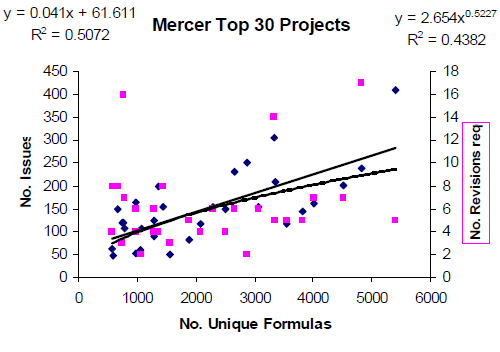Authors
Patrick O'Beirne
Abstract
Human error research on overconfidence supports the benefits of early visibility of defects and disciplined development. If risk to the enterprise is to be reduced, individuals need to become aware of the reality of the quality of their work. Several cycles of inspection and defect removal are inevitable.
Software Quality Management measurements of defect density and removal efficiency are applicable. Research of actual spreadsheet error rates shows data consistent with other software depending on the extent to which the work product was reviewed before inspection.
The paper argues that the payback for an investment in early review time is justified by the saving in project delay and expensive errors in use.
'If debugging is the process of removing bugs, then programming must be the process of putting them in' - Anon.
Sample

The defect rate for a model can be estimated from the number of unique formulas.
For this sample of 30 financial models:
- Average 2,182 unique formulae per model.
- Average 151 issues raised during the initial review.
- Average six revisions to produce a model that could be signed-off.
- One spreadsheet needed 17 revisions to resolve 239 issues.
- Average 7% defect injection rate, 75% defect removal efficiency.
Publication
2007, EuSpRIG
